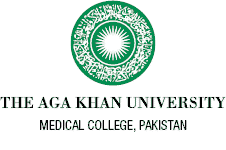Paediatric Physical Therapy programme: Module 3
MANAGEMENT OF CARDIO-PULMONARY CONDITIONS
MODALITIES OF CHEST PT
- Postural drainage
- PEP mask
- Smart Vest
- Percussion and vibration
- Oxygen systems
- Nebulizers and aerosols
- Chest sounds
- Heart sounds
- ACBT
- How to read chest X-rays (guest lecture)
- Respiratory acidosis and alkalosis (guest lecture)
- Congenital Heart (guest lecture)
5. Children requiring long-term mechanical ventilation
• Chronic respiratory failure/signs of CRF
• Lung parenchyma and airway
• Central dysregulation of breathing
• Respiratory pump failure
• Mechanical Ventilation
• Selection criteria for mechanical ventilation
• Types and modes of mechanical ventilation
• Complications associated with mechanical ventilation
• Elements of PT management
6. Modes of mechanical ventilation
• Volume control and its types
• Pressure control and its types
7. CYSTIC FIBROSIS
• Pathophysiology and etiology
• Diagnosis/medical management
• Measuring pulmonary function
• Signs/symptoms
• Nutrition
• Parental education
• PT management – in infant, pre-school, and school-going children
• PEP mask and Flutter devices
• Adolescence
8. ASTHMA
• Pathophysiology
• Primary impairment/ diagnosis
• Clinical classification of disease severity
• Impairment in infancy and adulthood
• Medical management
• PFT’s
• Secondary impairments
• Summary of medical aspects
• PT exam, evaluation and intervention
9. THORASIC SURGERY
• Congenital heart defects – Cyanotic
• ASD, VSD, PDA, Coractation of Aorta, Pulmonary stenosis and Aortic stenosis
• Cyanotic defects
• TOF, transposition of the great arteries, Tricuspid atresia, Pulmonary Atresia, Truncus arteriosus, Total anomalous Pulmonary Venous Return and Hypo plastic Left Heart Syndrome
• Inotropic support
• Technical support
• Ventricular assist devices
• Pulmonary management – acute stage
• Pain and early mobilization
• Medical mobilization
• Medical complications
• Age specific interventions in the immediate post-op period
• Chronic disability and activity limitation in infancy, pre-school, school age and adolescence.
10. Chest physical therapy in ICU patients
• Chest physiotherapy techniques and their indications and contraindications.
• Nebulizing agents and their usage
• Manual hyperinflation technique
• Positioning and its benefits
• Bag and drag procedure
• Especial cases
11. Nebulizers
• Definition
• Importance
• Types and their categories
• Advantages and disadvantages
12. CPAP
• Definition
• Uses
• Difference between BIPAP and CPAP
• Mechanism of action
• Physiology of CPAP
• Indications
• Contraindications
• Types
13. Mary Massery techniques
• Embryologic development of breathing muscles
• Practice breathing
• Normal influences on chest wall development
• Breathing patterns and their development
• Breathing and motor strategies
• Normal resting respiratory rates


